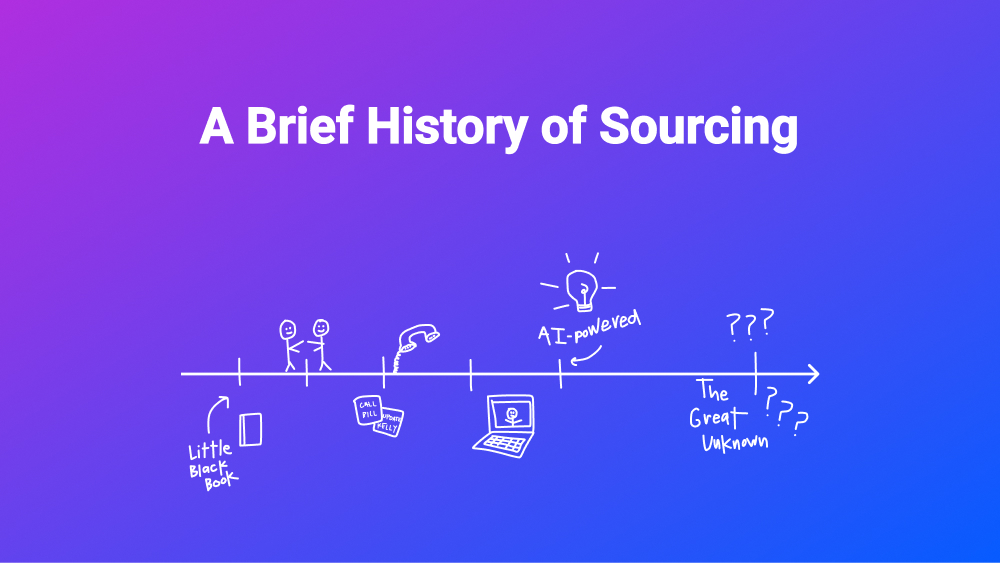As a talent acquisition consultant, specializing in the areas of sourcing and recruitment marketing, I am frequently asked to aid in hard-to-find candidate pursuits. Generally, I can perform a few Boolean searches to identify said passive candidate within a few minutes, retrieving a myriad of qualified candidates for the picking. It has taken a pandemic and thirty years of experience to finally realize that the “war on talent” is fictitious. In this internet age Recruiters and Sourcers can identify any person, anywhere, including their former names, contact info, x-spouses and neighbors’ email. That is not intended to be funny, we really can do that. Information is everywhere. This leaves the question to be asked, do we really have a problem finding talent, or do we have trouble getting talent to respond to us?Now before you start telling me that you have an actual job that really is hard to fill, I can tell you I believe you. But if we hash out the details, I’m sure we could agree on the fact that the type of person you seek exists, it’s just the Recruiter can’t find someone to be interested in the job when they need them to be interested. This is where the problem lies. In order to look at the talent shortage differently, we must rephrase the problem we are trying to solve. The talent acquisition challenge is no longer around “where do we find candidates”, but “how do we get passive candidates to engage with us”? Recruiters now are expected to be recruitment marketing gurus, without any training in that area, and to adopt an always-on news media cycle to job sharing and content writing. When Recruiters fail to understand passive candidate engagement, the time it takes to fill a job increases. Hiring managers complain. Leaders then assume a performance problem with the Recruiter, when in fact it is a skill and training issue.The first step in changing a perspective, when faced with a challenge, is analysis. Noted are a few challenge questions to determine if your organization understands the need for passive talent engagement:
- Do your Recruiters lack a multi-channel approach when reaching out to prospective candidate leads? Do they rely on a good mix of email, phone, text, and social media direct messaging?
- Do your Recruiters have a one-and-done mentality? Meaning, do Recruiters only focus on the potential applicant that responds favorably?
- When a prospect declines a request to engage, do your Recruiters log those declines and plan for future engagements with the candidate?
- When a prospect declines a request to engage, do your Recruiters request to stay in touch for referrals?
The long-term philosophy for candidate engagement is to log, connect, and reconnect with prospects. Those connections, if done right, eventually form a relationship with the prospect. That relationship helps to identify the potential candidates dream role. The Recruiter then ties that dream to a company value. It is the purposeful and diligent connection with the prospect that, over time, help the lead to recognize the positives of a new job can outweigh the negatives in their current role. Yahtzee. Seriously, do our recruiters have time to form these relationships while managing eighty requisitions?A modern talent acquisition team understands that the department doesn’t start and end with Recruiters. Leading-edge talent teams incorporate Sourcing, Recruitment Marketing, and Competitive Intelligence as sub-sets within the TA department. Missing any part of that equation positions a team for failure and missed opportunity.So where to start? Budgets are tight. Perhaps asking for a sourcing team or a CRM is an unrealistic ask right now. My suggestion is to start with marketing. Ask for an internal marketing resource to be dedicated to talent acquisition. Even better, you can take a current TA resource (perhaps a coordinator or recruiter) and swap out the FTE budgeted role with your own recruitment marketing specialist. It’s a start. Happy Hunting.
Become a hiring machine
Ready to see for yourself how Loxo can transform your recruitment workflow and make you more efficient than ever before? We thought you might be.




